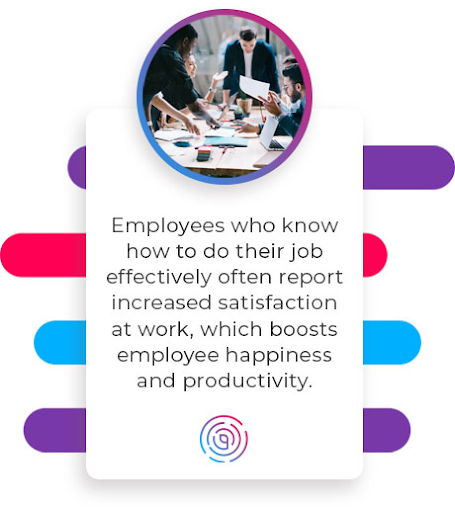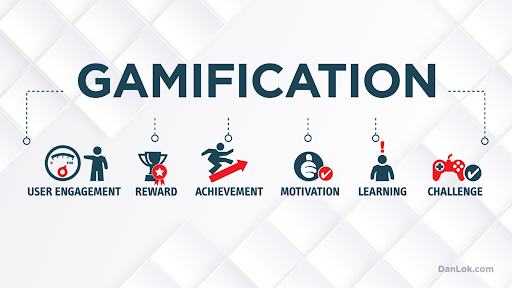Continuous learning definition in the workplace is a concept that emphasizes the importance of employees continually acquiring new knowledge and skills. So why is continuous learning important?
It encourages individuals to focus on their own personal and professional development rather than simply relying on their current qualifications.
After all, 94% of employees prefer to stay with a firm longer if it invests in their learning and development.
94% Of Employees Wouldn’t Quit If The Employee Learning Opportunities Were Right
However, this requires an ongoing commitment to learning, with opportunities for employees to engage in their professional development and build their knowledge base and skill set.
Continuous learning allows employees to stay ahead of the curve, stay competitive, and be equipped with the latest information, tools, and techniques they need to succeed in their roles.
With this approach, organizations can ensure they have engaged, motivated, and proficient employees capable of meeting their job’s ever-evolving demands.
Nonetheless, engaging learners today is not an easy feat, so here we will be sharing some tips for you.
Top Tips For Embracing Continuous (And Engaging) Learning At Scale
1. Assess your current learning practices
If you’re looking to embrace continuous learning at scale in your workplace, the first step is to assess your current learning practices.
Here are some key questions to ask yourself:
- What are the current learning practices in your organization?
- Are they effective and efficient?
- Are they tailored to the needs of the team?
- Are they meeting the learning goals of the organization?
- Are they regularly updated and evaluated?
Once you’ve assessed your current learning practices, you’ll need to figure out how to make them better.
This could involve implementing a learning management system, introducing a culture of continuous learning, and creating an environment that encourages employees to learn from one another.
A learning management system can help to streamline processes and make sure that every employee gets the training they need.
It can also provide access to a wide range of resources, such as online learning, podcasts, and webinars, making it easy for employees to stay up to date on the latest industry trends.
2. Build A Strategy For Continuous Learning
To create a continuous learning culture and build a strategy for continual learning, businesses must first identify their needs and objectives.
From there, you can develop an effective strategy that enables continuous learning through on-demand, blended or other methods.
A continuous learning strategy should focus on both short-term and long-term goals, such as gaining new skills or knowledge, improving existing knowledge, or mastering new technologies.
It should also include elements such as creating personalized learning plans for each learner, setting clear expectations for learners, providing feedback to learners, and rewarding learners for their accomplishments.
A successful continuous learning strategy will enable companies to remain agile and stay ahead of the competition by continually developing their workforce with the latest skills and knowledge.

3. Embrace Flexible Learning Strategies
Flexible learning strategies are a great way to embrace learning for all types of learners.
It allows them to choose how they learn best.
This could include different methods such as online courses, hands-on activities, group discussions, webinars, games, etc.
With flexible learning strategies, employees can choose which method works best for them and get the most out of their education.
These strategies also allow for more individualized instruction so that each learner can progress at their own pace.
4. Gamify The Learning Progress
Gamifying the learning progress is a great way to make learning fun and engaging.
By incorporating game-like elements such as rewards, points, and levels, it can help motivate learners to work harder and stay engaged with the content.
It also helps create a more interactive learning environment that encourages collaboration and teamwork.
Learners can track their own progress through leaderboards or achievements and feel more motivated to complete tasks.

Gamifiing the learning process is also beneficial for teachers as it allows them to provide feedback more quickly and give more personalized instruction.
Finally, gamification makes the overall experience more enjoyable for everyone involved, which can lead to greater retention of knowledge in the long run.
Bottom Line
In this article, you learned everything about why is continuous learning important, as well as tips to get started.
Creating a culture of continuous learning can help to ensure that learning remains top of mind for everyone in the organization.
This could involve providing employees with the opportunity to attend seminars and workshops, as well as offering mentoring and support programs.
It’s also important to ensure that employees are encouraged to share their knowledge and experiences with each other, helping to foster a culture of collaboration.
Finally, it’s important to ensure that the workplace is an environment that encourages learning. This could involve providing employees with the tools and resources they need to succeed, as well as offering a flexible work schedule that allows for flexibility and learning opportunities.
By assessing your current learning practices, implementing a learning management system, creating a culture of continuous learning, and creating an environment that encourages learning, you can ensure that your organization embraces continuous learning at scale.
To learn more about learning strategies and how to grow your business, click here.

